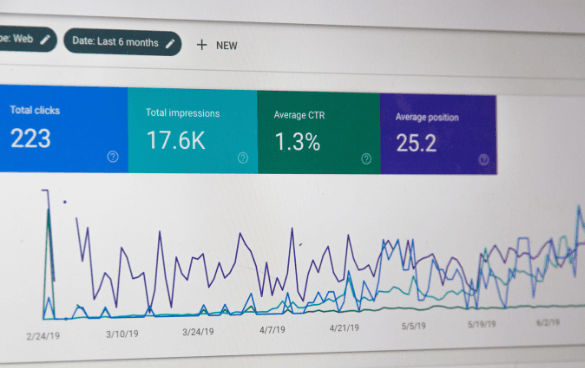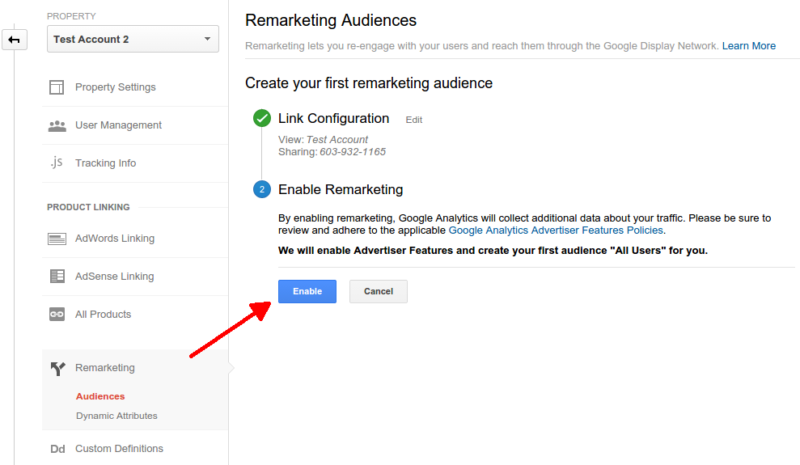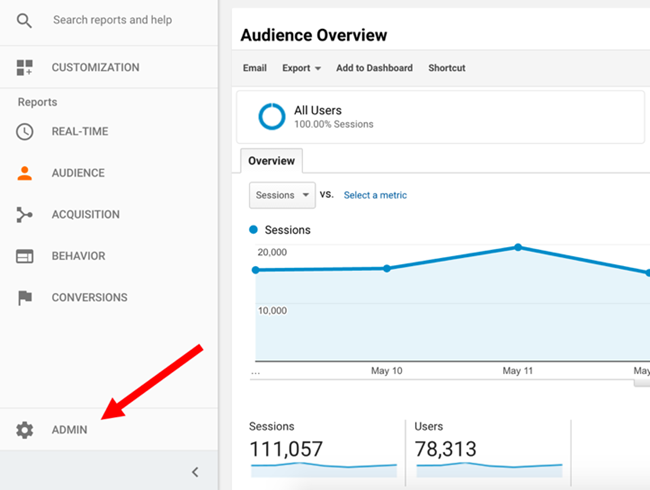Step-by-Step Tutorial: "Remarketing" In Google Analytics
Remarketing in Google Analytics: Changing Site Visitor Data Into Sales
The capability to exactly target audiences based on their habits and choices opens doors to a realm of possibilities, driving organizations towards lasting development and profitability. With a careful evaluation of visitor activities and a customized remarketing method, organizations can navigate the electronic landscape with precision and finesse, unwinding the real capacity of their on the internet existence.

Benefits of Remarketing in Google Analytics
Remarketing in Google Analytics offers businesses the chance to reconnect with internet site visitors that have revealed interest in their items or solutions, consequently raising brand visibility and conversions. By leveraging this powerful device, businesses can remain top-of-mind with possible customers who have already involved with their internet site. Among the crucial advantages of remarketing is the capability to target certain target markets based upon their habits on the site, enabling for personalized messaging and tailored ad campaign.
Furthermore, remarketing in Google Analytics can aid businesses boost their conversion rates by re-engaging with visitors that may not have made a purchase or finished a wanted activity on the internet site throughout their first see. This targeted strategy can cause higher conversion prices and eventually drive even more sales. Additionally, remarketing can also assist businesses build brand name loyalty and trust by keeping regular interaction with potential customers throughout their acquiring journey.
Establishing Remarketing Campaigns
When starting remarketing projects in Google Analytics, businesses require to very carefully plan and execute strategic targeting techniques to efficiently reach their wanted audience. The primary step in establishing remarketing campaigns is to specify clear objectives. Whether the objective is to increase web site conversions, promote certain items, or raise brand recognition, having a well-defined purpose will certainly direct the whole project technique.
Following, organizations need to produce target market lists based upon details criteria such as web site site visitors, users who deserted their purchasing carts, or those who communicated with particular content. These listings allow for targeted messaging tailored to every section of the target market, boosting the possibilities of conversion.

Finally, organizations should set up conversion tracking to determine the success of their remarketing projects properly. By analyzing the performance data, services can optimize their advocate far better outcomes and greater ROI.
Leveraging Target Market Division for Remarketing
Utilizing audience division is a critical approach for enhancing the performance of remarketing projects in Google Analytics (What Is “Remarketing” In Google Analytics?). By dividing your internet site visitors into distinct teams based upon their actions, demographics, or interests, you can customize Discover More Here your remarketing initiatives to target these particular sectors with appropriate advertisements. Target market segmentation allows you to produce even more customized and targeted projects, enhancing the chances of re-engaging visitors and driving conversions
Segmenting your target market allows you to provide personalized messaging that resonates with each team's preferences and needs. For instance, you can produce different remarketing checklists for users who deserted their buying carts, saw certain product web pages, or downloaded a particular source. By recognizing the different motivations and passions of these sectors, you can craft compelling advertisement creatives that are most likely to catch their focus and trigger them to review your website.
Additionally, target market division likewise aids you optimize your advertisement spend by concentrating on high-value sectors that are more probable to transform - What Is “Remarketing” In Google Analytics?. By examining the performance of each sector, you can designate your budget better and maximize the return on your remarketing financial investment
Analyzing Remarketing Efficiency Metrics
Metrics such as click-through price (CTR), conversion price, price per purchase (CERTIFIED PUBLIC ACCOUNTANT), and return on ad spend (ROAS) give valuable understandings right into the efficiency of your remarketing initiatives. Certified public accountant aids identify the cost of acquiring a customer via your remarketing project, while ROAS analyzes the earnings produced for each dollar invested on marketing. By assessing these metrics, you can determine areas for improvement, maximize your projects, and designate budget plan extra effectively to make the most of the ROI of your remarketing techniques in Google Analytics.

Finest Practices for Remarketing Success
Building on the foundation of assessing remarketing efficiency metrics, applying ideal methods is key to attaining success in your remarketing endeavors. One essential finest method is to segment your target market successfully. By separating your audience based upon their actions, demographics, or interests, you can create customized messaging that resonates with each section, eventually enhancing the probability of conversion. In addition, ensure that your remarketing advertisements are aesthetically appealing and have engaging contact us to activity. Capturing the user's interest and triggering them to take the preferred activity is crucial.
Pounding individuals with the exact same advertisement repeatedly can lead to inconvenience and decreased performance. Monitor your projects routinely, evaluate the data, and make data-driven choices to continually fine-tune your remarketing initiatives for maximum effect.
Conclusion
In final thought, remarketing in Google Analytics supplies services the chance to take advantage of visitor data to increase sales and drive conversions. By utilizing audience division, assessing efficiency click to read metrics, and applying ideal practices, organizations can tailor their remarketing initiatives to target high-value sections efficiently. Through compelling advertisement creatives and conversion monitoring, companies can develop brand loyalty and trust, eventually making the most of the influence of their advertising and marketing techniques.
Via a meticulous evaluation of visitor actions and a tailored remarketing approach, organizations can navigate the electronic landscape with accuracy and finesse, untangling the true possibility of their on the internet visibility.
One this website of the essential advantages of remarketing is the capacity to target certain target markets based on their habits on the website, permitting for individualized messaging and tailored marketing projects.
Additionally, remarketing can likewise aid organizations build brand loyalty and count on by preserving constant interaction with potential clients throughout their purchasing journey.
Metrics such as click-through price (CTR), conversion price, cost per acquisition (CPA), and return on advertisement spend (ROAS) supply beneficial understandings right into the performance of your remarketing efforts. By analyzing these metrics, you can determine locations for renovation, optimize your campaigns, and assign spending plan much more successfully to make best use of the ROI of your remarketing strategies in Google Analytics.